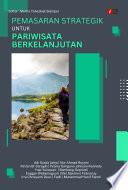
Proceedings of the 1st International Seminar on Sharia, Law and Muslim Society (ISSLAMS 2022)
This is an open access book. Wael B. Hallaq, a renowned sharia scholar, has called sharia an ‘episteme’ that suffered a ‘structural death’ following the dawn of modernity in the nineteenth and early twentieth centuries (Hallaq 2009, 15–16). Yet, its resurgent is remarkable across a number of jurisdictional fault-lines: from Muslim-majority nations in Middle East and Southeast Asia to Muslim-minority societies in Western Europe and North America. Across these jurisdictions, the relationship between sharia and state law is central. It includes sharia-state encounters, notably in the form of (state) Islamic law, in the field of family law, which is often asserted as the ‘core’ or ‘last stronghold’ of sharia (Moors 2003, 2; Coulson 1969, 115–6), and other substantive areas of law, such as Islamic economics and Islamic philanthropy and also jinayah (Islamic penal law). Regardless of their differences in their own specific context, these areas somehow manage to secure an importance place in the modern days. It involves different loci of authority to interpret, legislate, and enforce sharia, or parts of it that not only flourish but also being challenged around the Muslim world. Equally important are implications of the increasingly unsettled authority of apparently agreed-upon substance of sharia. To contribute on these issues, we would like to invite scholars from diverse discipline including law, anthropology, and Islamic studies, working in both Muslim-majority and Muslim-minority contexts, to present their works in our International Seminar on Sharia, Law, and Muslim Society (ISSLaMS).
- ISBN 13 : 2494069815
- ISBN 10 : 9782494069817
- Judul : Proceedings of the 1st International Seminar on Sharia, Law and Muslim Society (ISSLAMS 2022)
- Pengarang : , Putu Widhi Iswari, Andi Wicaksono, Qosim Khoiri Anwar, Al Farabi, Muhammad Hanif Al Hakim, Sigit Arif Bowo, Andi Wicaksono, Qosim Khoiri Anwar, Al Farabi, Muhammad Hanif Al Hakim, Sigit Arif Bowo, Andi Wicaksono, Qosim Khoiri Anwar, Al Farabi, Muhammad Hanif Al Hakim, Sigit Arif Bowo, Andi Wicaksono, Qosim Khoiri Anwar, Al Farabi, Muhammad Hanif Al Hakim, Sigit Arif Bowo, Andi Wicaksono, Qosim Khoiri Anwar, Al Farabi, Muhammad Hanif Al Hakim, Sigit Arif Bowo, Andi Wicaksono, Qosim Khoiri Anwar, Al Farabi, Muhammad Hanif Al Hakim, Sigit Arif Bowo, Andi Wicaksono, Qosim Khoiri Anwar, Al Farabi, Muhammad Hanif Al Hakim, Sigit Arif Bowo, Andi Wicaksono, Qosim Khoiri Anwar, Al Farabi, Muhammad Hanif Al Hakim, Sigit Arif Bowo, Andi Wicaksono, Qosim Khoiri Anwar, Al Farabi, Muhammad Hanif Al Hakim, Sigit Arif Bowo, Andi Wicaksono, Qosim Khoiri Anwar, Al Farabi, Muhammad Hanif Al Hakim, Sigit Arif Bowo, Andi Wicaksono, Qosim Khoiri Anwar, Al Farabi, Muhammad Hanif Al Hakim, Sigit Arif Bowo, Andi Wicaksono, Qosim Khoiri Anwar, Al Farabi, Muhammad Hanif Al Hakim, Sigit Arif Bowo, Andi Wicaksono, Qosim Khoiri Anwar, Al Farabi, Muhammad Hanif Al Hakim, Sigit Arif Bowo, Andi Wicaksono, Qosim Khoiri Anwar, Al Farabi, Muhammad Hanif Al Hakim, Sigit Arif Bowo, Andi Wicaksono, Qosim Khoiri Anwar, Al Farabi, Muhammad Hanif Al Hakim, Sigit Arif Bowo, Andi Wicaksono, Qosim Khoiri Anwar, Al Farabi, Muhammad Hanif Al Hakim, Sigit Arif Bowo, Andi Wicaksono, Qosim Khoiri Anwar, Al Farabi, Muhammad Hanif Al Hakim, Sigit Arif Bowo, Andi Wicaksono, Qosim Khoiri Anwar, Al Farabi, Muhammad Hanif Al Hakim, Sigit Arif Bowo, Andi Wicaksono, Qosim Khoiri Anwar, Al Farabi, Muhammad Hanif Al Hakim, Sigit Arif Bowo, Andi Wicaksono, Qosim Khoiri Anwar, Al Farabi, Muhammad Hanif Al Hakim, Sigit Arif Bowo, Andi Wicaksono, Qosim Khoiri Anwar, Al Farabi, Muhammad Hanif Al Hakim, Sigit Arif Bowo, Andi Wicaksono, Qosim Khoiri Anwar, Al Farabi, Muhammad Hanif Al Hakim, Sigit Arif Bowo,
- Kategori : Social Science
- Penerbit : Springer Nature
- Bahasa : en
- Tahun : 2023
- Halaman : 339
- Google Book : https://play.google.com/store/books/details?id=27KjEAAAQBAJ&source=gbs_api
-
Ketersediaan :
The participants are the owners of capital (shahibul mal), and the insurance com- pany is the fund manager (mudharib). The profits arising from the management of these funds are distributed to both parties by the provisions promised at ...







